Three billion years ago, Earth was a very different place.
-
Oman Drilling Project: An Ancient Seabed Holds Secrets in the Search for Life on Other Planets
The Oman Drilling Project is a multi-national investigation into the Samail Ophiolite, the world’s largest, best-exposed, and most-studied subaerial block of oceanic crust and upper mantle. Scientists are extracting and examining borehole samples from key locations within the ancient seabed to follow the journey of carbon from atmosphere to beneath the earth.
The Oman Drilling Project video, produced by the Deep Carbon Observatory, provides a view of the landscape, the science, and the exciting potential discoveries that will increase our understanding of microbial ecosystems within extreme environments and the origins of life in the universe. Scientists Peter Kelemen (a member of the NASA Astrobiology Institute Rock-Powered Life team) and Alexis Templeton (PI of Rock-Powered Life) provide narration.
Source: [Deep Carbon Observatory]
August 03, 2018 • Posted by: Miki Huynh • Report issue
-
Seminar: GSFC Summer Research Associate 2018 Presentations

Goddard Center for Astrobiology (GCA) – NASA Astrobiology Institute
Undergraduate Research Associates in Astrobiology: End-of Term Research Presentations
The GCA sponsors a summer program (URAA) in which talented undergraduate students conduct cutting-edge research under the direction of GCA scientist-mentors. The students present summaries of their research objectives and findings during an end-of-term session delivered both locally and over the internet to the NAI as a whole.
The Class of 2018 will present on Thursday, August 2nd at 1-2 PM EDT in Building 34, Room W130. You are invited to attend, either locally or remotely.
Source: [NAI Seminars and Workshop]
August 01, 2018 • Posted by: Miki Huynh • Report issue
-
NASA Statement on Possible Subsurface Lake near Martian South Pole
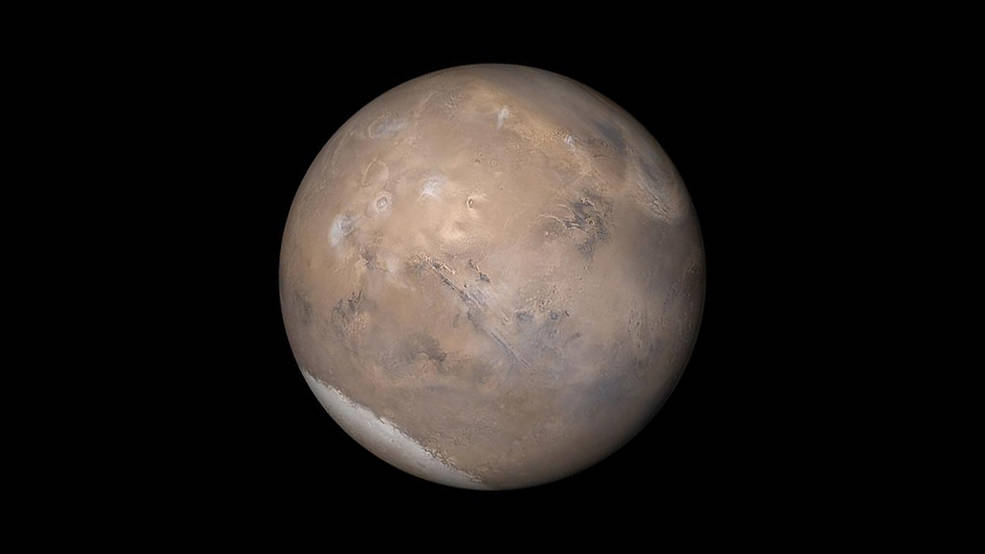
The view of Mars shown here was assembled from MOC daily global images obtained on May 12, 2003. Credits: NASA/JPL/Malin Space Science SystemsA new paper published in Science this week suggests that liquid water may be sitting under a layer of ice at Mars’ south pole.
The finding is based on data from the European Mars Express spacecraft, obtained by a radar instrument called MARSIS (Mars Advanced Radar for Subsurface and Ionosphere Sounding). The Italian Space Agency (ASI) led the development of the MARSIS radar. NASA provided half of the instrument, with management of the U.S. portion led by the agency’s Jet Propulsion Laboratory in Pasadena, California.
The paper, authored by the Italian MARSIS team, outlines how a “bright spot” was ...
Source: [NASA]
July 26, 2018 • Written by: NASA • Report issue
-
From Habitability to Life on Mars
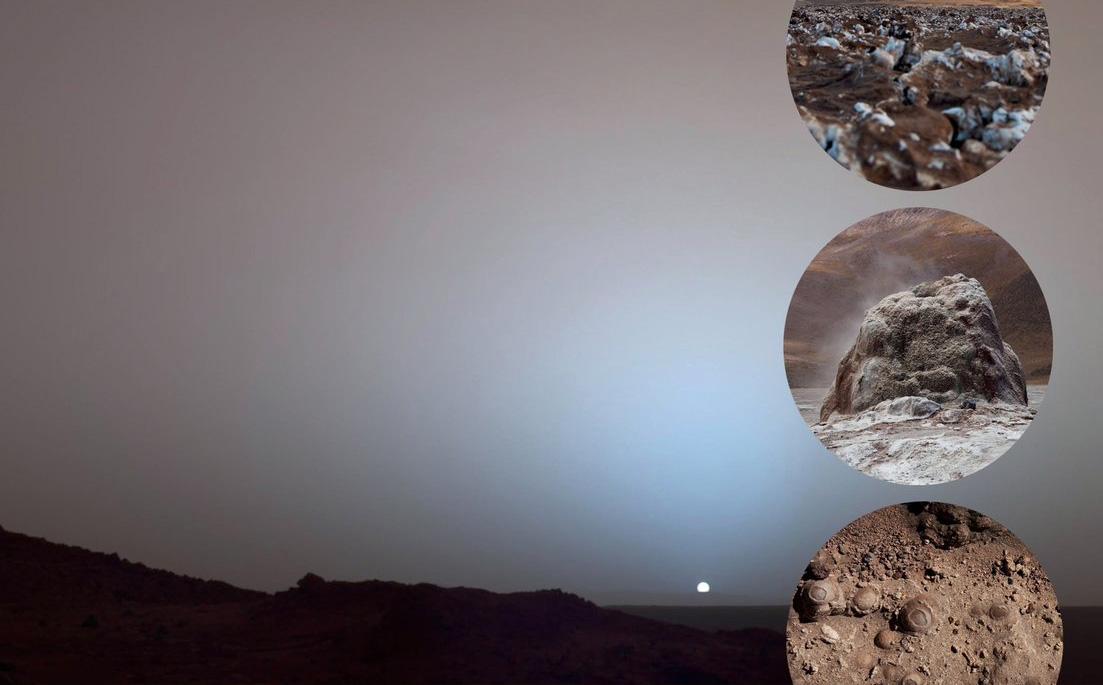
Source: ElsevierFrom Habitability to Life on Mars, a new book edited by SETI Institute scientists Nathalie A. Cabrol and Edmond A. Grin, with content by authors directly involved in past, current, and upcoming Mars missions, is now available!
From the publisher, Elsevier:
From Habitability to Life on Mars explores the current state of knowledge and questions on the past habitability of Mars and the role that rapid environmental changes may have played in the ability of prebiotic chemistry to transition to life. It investigates the role that such changes may have played in the preservation of biosignatures in the geological record ...
Source: [Elsevier (via SETI / NASA Ames Research Center)]
July 23, 2018 • Posted by: Miki Huynh • Report issue
-
Life Underground - Available to Play
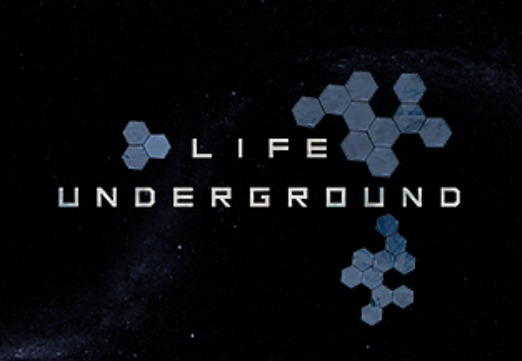
Image source: Gene Innovation Lab / USCLife Underground, a game developed by the Game Innovation Lab at the University of Southern California, takes players on a journey into the depths and extremes of the Earth, and it’s available to download!
From Game Innovation Lab:
“The Life Underground game is an interactive outreach experience for 7th and 8th grade classrooms. The goal is for students to visualize microscopic life at a range of terrestrial and extraterrestrial subsurface conditions. Students take the role of a young scientist investigating extreme subsurface environments for microbial life. They will navigate through extreme conditions, including those of temperature, pressure, acidity, and energy limitations, and they will begin to recognize what characterizes life in this context.”Free copies are available to students, educators, and reviewers. For more information and to download the game, visit the Game Innovation Lab website.
July 19, 2018 • Posted by: Miki Huynh • Report issue
-
Electron Acceptors and Carbon Sources for a Thermoacidophilic Archaea

The thin line of Earth's atmosphere and the setting sun are featured in this image photographed by the crew of the International Space Station while space shuttle Atlantis on the STS-129 mission was docked with the station. Source: NASAResearchers have uncovered details about the versatile energy metabolism of the thermoacidophilic archaea, Acidianus strain DS80. This organism grows both autotrophically and heterotrophically with a range of electron acceptors. The new study examines the growth response of strain DS80 to varying electron acceptors (sulfur, ferric iron, or oxygen), and the amount of CO2 assimilated into biomass under each set of conditions. The study ties carbon sources used by DS80 to electron acceptor availability.
Microbial metabolism is essential in global biogeochemical cycles that affect the habitability of Earth. Studying the activities of microorganisms and their role in the environment is useful for understanding our planet, and provides insight into more general principles of habitability that could be applicable to other worlds.
The study, “Electron Acceptor Availability Alters Carbon and Energy Metabolism in a Thermoacidophile,” was published in the journal Environmental Microbiology. The work was supported by NASA Astrobiology through the Exobiology Program and NASA Astrobiology Institute.
Source: [Astrobiology at NASA]
July 13, 2018 • Written by: Aaron Gronstal • Report issue
-
Yosemite Granite Tells New Story About Earth's Geologic History
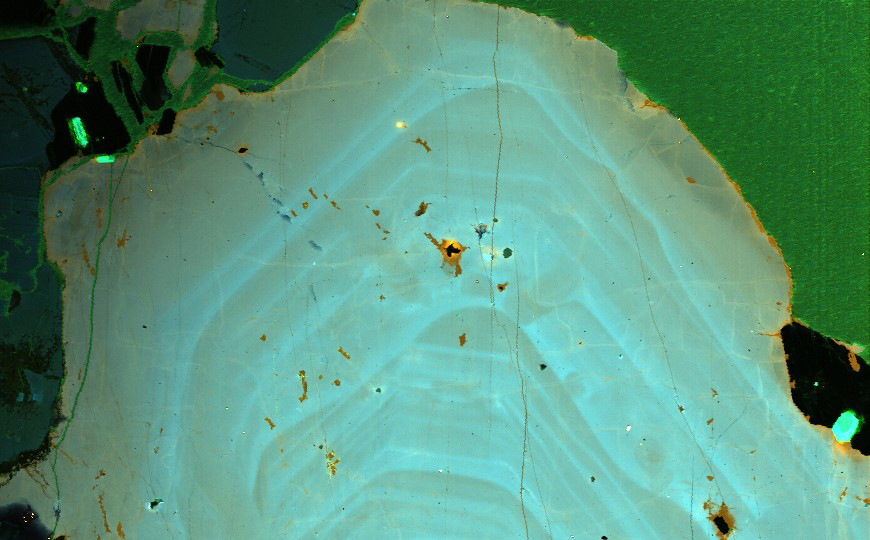
Quartz analysis image. Source: Michael Ackerson / Carnegia ScienceGranite is a record keeper of the history of continental movement, volcanic activity, and thermal properties of Earth’s upper crust, going back as far as 4.4 billion years ago.
Michael Ackerson and his team have analyzed granite rock samples found in Yosemite National Park, and their study reveals evidence of mineral crystallization occurring at a much lower temperature than previously thought possible—around 100-200 degrees cooler than currently assumed. This discovery has the potential to change the larger picture in our understanding of the geology of Earth’s past, including crust and magma formation, and the link between volcanoes, ores deposits, and granite.
The paper, “Low-temperature crystallization of granites and the implications for crustal magmatism,” is published in Nature.
A full press release is available through Carnegie Science.
Source: [Nature (via Carnegie Science)]
July 11, 2018 • Posted by: Miki Huynh • Report issue
-
Supporting SHERLOC in the Detection of Kerogen as a Biosignature
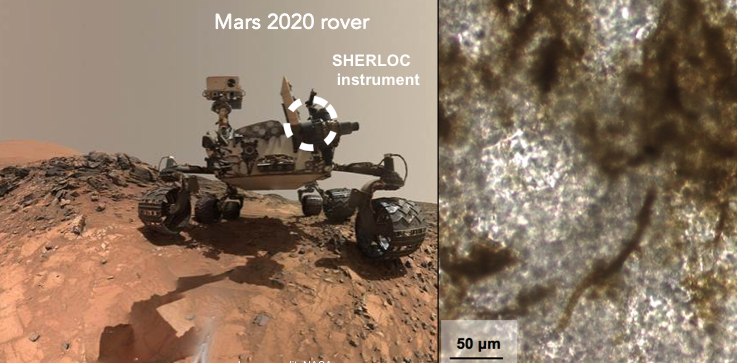
Left: SHERLOC will be mounted on the arm of the Mars 2020 rover. Image source: NASA. Right: Stromatolitic limestone as a Mars analog sample containing kerogen (dark regions) as a complex fossil biosignature, hosted by carbonate (light regions), which was successfully detected by UV Raman and fluorescence spectroscopy in this study. Image source: S. Shkolyar / J. Farmer.The upcoming Mars 2020 rover mission will hunt for signs of past microbial life and indications of habitable conditions on Mars. A device mounted on the rover’s arm, called SHERLOC (Scanning Habitable Environments with Raman & Luminescence for Organics & Chemicals), will aid in the detection of kerogens, fossilized organic materials in sedimentary rocks.
To inform NASA’s planning strategies for SHERLOC, Svetlana Shkolyar, a 2014 recipient of the NASA Astrobiology Early Career Collaboration Award, and her research team analyzed the capabilities of co-located time-gated Raman and fluorescent spectroscopy in detecting and distinguishing kerogen when scanning Mars analogue samples.
The team’s findings, published in Astrobiology reveal promising results and highlight the value of combining co-located Raman and fluorescence spectroscopies, similar to those obtainable by SHERLOC, to strengthen the confidence of kerogen detection as a potential biosignature in complex samples.
Source: [Astrobiology (via SETI Institute)]
July 06, 2018 • Posted by: Miki Huynh • Report issue
-
New Estimates of Earth's Ancient Climate and Ocean pH
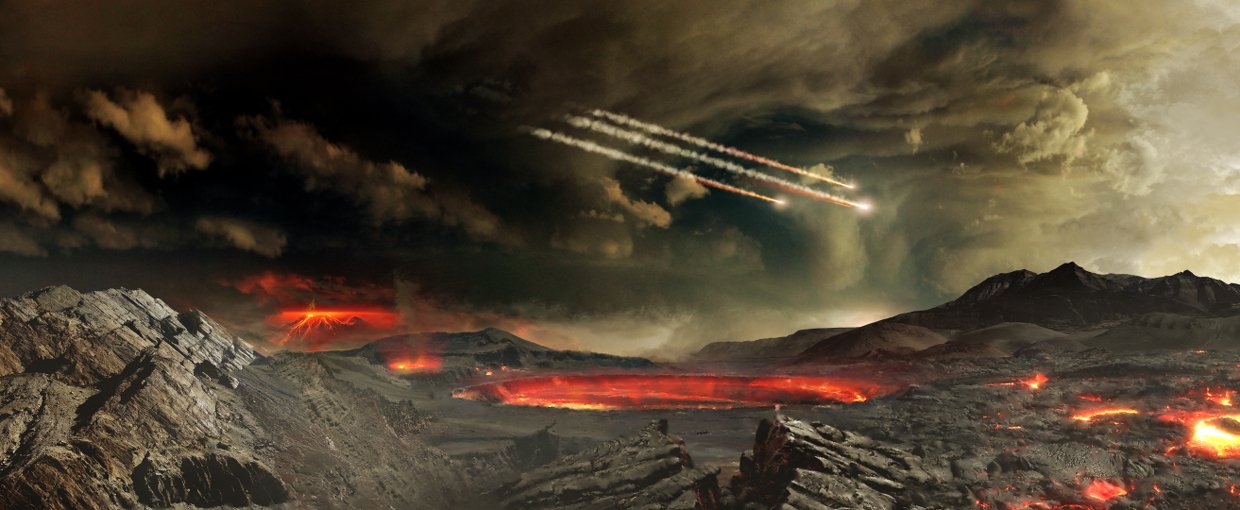
Artist concept of the early Earth. Source: NASA's Goddard Space Flight Center Conceptual Image LabA recent study provides new constraints on the environmental conditions that were present on the ancient Earth. Previous approximations of early Earth’s climate and ocean pH vary dramatically, but the new study aims to provide more accurate estimates. This is important because these conditions could have profoundly influenced the origins and early evolution of life.
In the study, researchers applied a self-consistent geological carbon cycle model to the last 4 billion years of Earth’s history. The results predict that the climate was temperate, and that the ocean pH was nearly neutral throughout the Precambrian (4.6 billion years ...
Source: [Astrobiology at NASA]
June 28, 2018 • Written by: Aaron Gronstal • Report issue
-
How Microbes From Spacecrafts Survive Clean Rooms
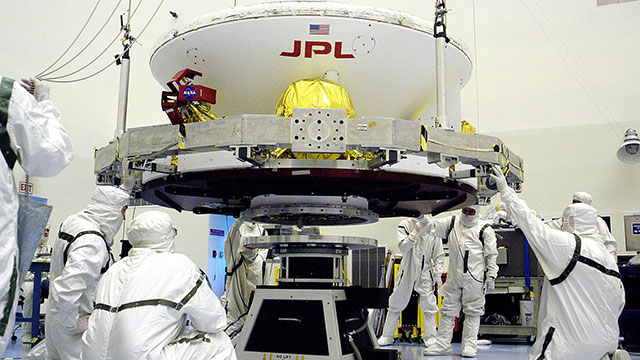
In the Payload Hazardous Servicing Facility, workers prepare to lift the Mars Exploration Rover-1 (MER-B) onto a spin table during preflight processing of the spacecraft. Researchers at Cal Poly offer the first biochemical evidence explaining the reason why contamination persist after use of the cleaning facility. Image source: NASA/JPL/KSCDr. Rakesh Mogul, professor of biological chemistry at Cal Poly Pomona and a 2016 Minority Institute Research Support (MIRS) Program (now the Astrobiology Faculty Diversity Program) Fellow and his team have discovered a reason why, even after thorough cleaning, certain microbes from spacecrafts can still survive in the clean rooms at NASA.
Excerpted from the press release from Cal Poly Pomona:
The research team analyzed several Acinetobacter strains that were originally isolated from the Mars Odyssey and Phoenix spacecraft facilities. They found that under very nutrient-restricted conditions, most of the tested strains grew on and biodegraded the cleaning agents used ...Source: [Astrobiology]
June 25, 2018 • Posted by: Miki Huynh • Report issue
-
Radical Factors in the Evolution of Animal Life

Scientists develop a new molecular timeline for the production of reactive oxygen species in the evolution of life. Source: Y. J. Taverne et al. / Wiley Online Library
Complex animal life appeared in the earth’s record soon after the second major rise in atmospheric oxygen roughly 800 million years ago. The evolution of enzymatic reduction of oxygen yielded a several-fold increase in energy production by life on Earth, enabling this progression to multicellular animal life. However, higher atmospheric oxygen concentrations would also have been expected to result in increased levels of reactive oxygen species (ROS) – derivatives of oxygen that are harmful to life and that, for humans, can accelerate aging and cardiovascular disease.
Yannick Taverne and his team, with support from Alternative Earths, the NASA Astriobiology Institute Team based at UC Riverside, have developed a molecular timeline for the production of ROS in the evolution of life. The paper is published in BioEssays.
Source: [BioEssays (via UC Riverside)]
June 22, 2018 • Posted by: Miki Huynh • Report issue
-
Understanding Oxygen as an Exoplanet Biosignature

Potential false positive mechanisms for O2. This cartoon summarizes the atmospheric mechanisms by which O2 could form abiotically at high abundance in a planetary atmosphere (Meadows, 2017).Researchers are studying how environmental context can help determine whether oxygen (O2) detected in extrasolar planetary observations is more likely to have a biological source. The team provide an in-depth, interdisciplinary example of O2 biosignature identification and observation, which serves as the prototype for the development of a general framework for biosignature assessment.
The article, Exoplanet Biosignatures: Understanding Oxygen as a Biosignature in the Context of Its Environment, is an open access article in the journal Astrobiology. The work was supported by the NASA Astrobiology Program and in part by the NASA Astrobiology Institute’s Virtual Planetary Laboratory ...
Source: [Astrobiology]
June 18, 2018 • Written by: Julie Fletcher • Report issue
-
Recap of the 2018 Astrobiology Graduate Conference (AbGradCon)
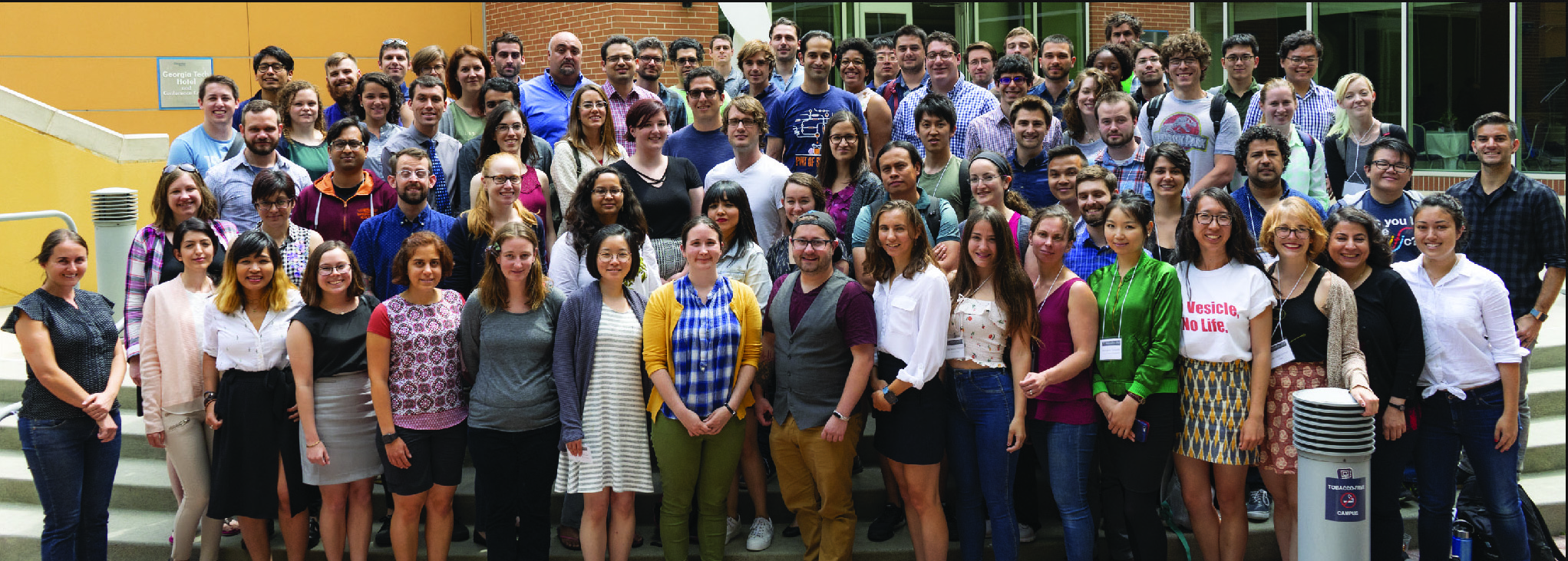
Group photo of the participants at the 2018 Astrobiology Graduate Conference that took place June 4-7, 2018 in Atlanta Georgia. Image credit: AbGradConThe 14th Astrobiology Graduate Conference (AbGradCon) was successfully held from June 4-7, 2018 at the Georgia Institute of Technology, in Atlanta, Georgia, with 96 participants presenting 72 posters and 23 oral presentations Oral presentations were streamed via SAGANLive and are available at http://saganet.org/page/saganlive.
The graduate student and postdoctoral fellow attendees hailed from 49 institutions and 9 different countries (Brazil, Canada, Czech Republic, Germany, India, Japan, Mexico, United Kingdom, and United States). In addition to the scientific program, the attendees gathered for social activities each night and an educational field trip to the Georgia Aquarium the ...
June 15, 2018 • Written by: AbGradCon • Report issue
-
Astrobiologist Rebecca Rapf Receives Inaugural Maggie C. Turnbull Early Career Award
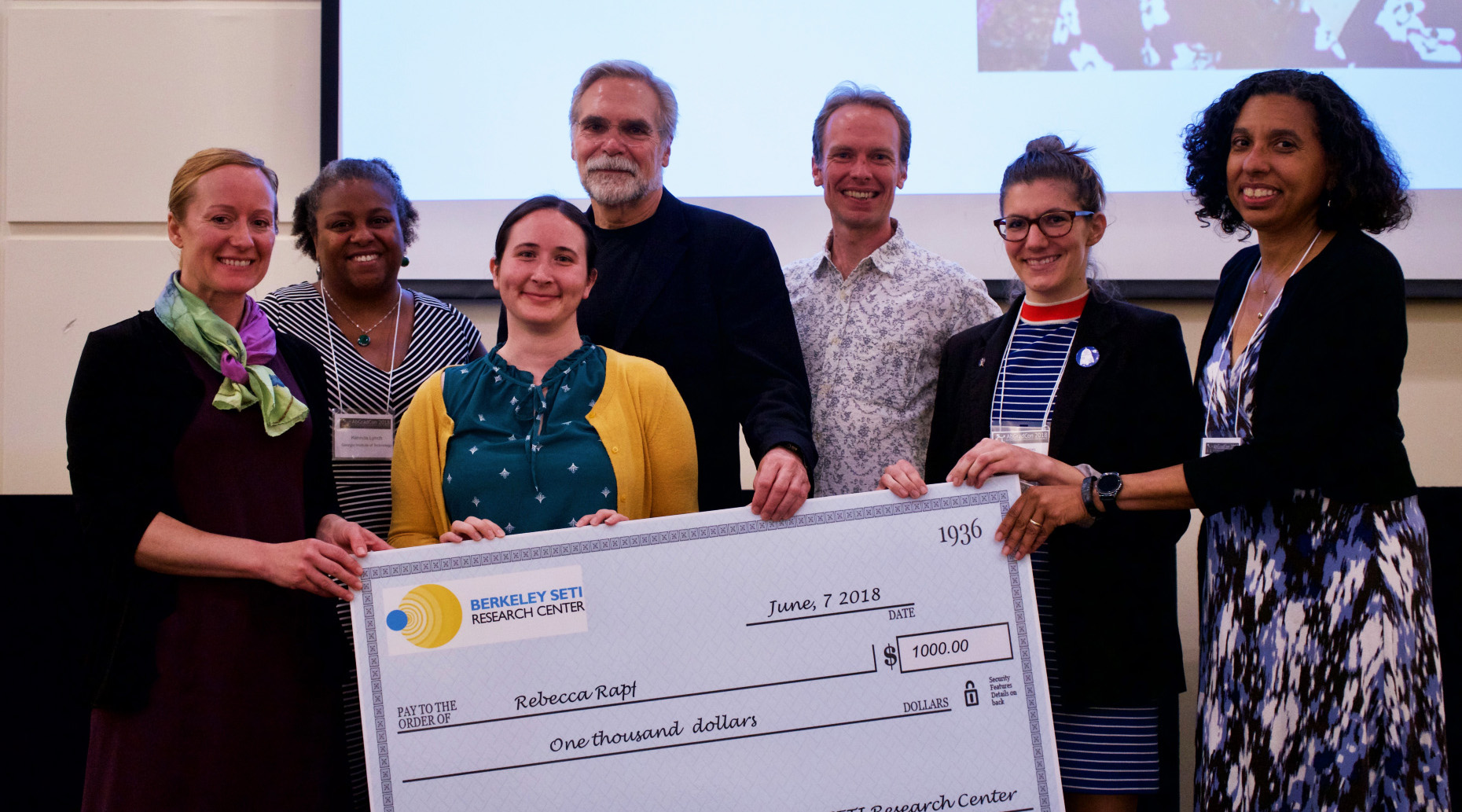
Rebecca Rapf awarded with the Maggie C. Turnbull Community Service Award at AbGradCon 2018. Image source: https://turnbullaward.org/.Rebecca Rapf, a postdoctoral scholar in physical chemistry at the Lawrence Berkeley National Laboratory, is the first recipient honored with the newly created Maggie C. Turnbull Award for community service.
Rapf was selected from a group of 10 early career astrobiologists nominated by their peers based on their outstanding dedication to education, outreach, community engagement and professional service to the early career community. The award commemorates Margaret “Maggie” C. Turnbull, a pioneer in exoplanet research and the search for life in the universe and founder of the Astrobiology Graduate Conference (AbGradCon), now in its 14th year of existence.
Read the full press release at the Berkeley SETI Research Center website.
Source: [Berkeley SETI Research Center / AbGradCon]
June 13, 2018 • Written by: Berkeley SETI Research Center • Report issue
-
Searching for the Great Oxidation Event in North America

Map showing the distribution of the Huronian Supergroup and other Paleoproterozoic successions in the Great Lakes area. The two studied drill cores (150–4, 156–1) are located ca. 10 km north of the city of Elliot Lake, Ontario, Canada. Modified from the work of Rasmussen et al. (2013).Members of the NASA Astrobiology Institute University of Wisconsin Team have reported the first in situ analysis of all four S isotopes in metasediments of the Paleoproterozoic Huronian Supergroup and examined sulfur isotope evidence for the Great Oxidation Event (GOE). The early study of Papineau et al. (2007) argued for placement of the GOE within the lower Huronian. However, this interpretation is not supported by the improved precision, analysis of 36S, and new textural interpretations of this study. Values of Δ33S are uniformly from -0.07 to 0.38‰ in the lower Huronian. The most commonly analyzed ...
June 13, 2018 • Written by: Julie Fletcher • Report issue



